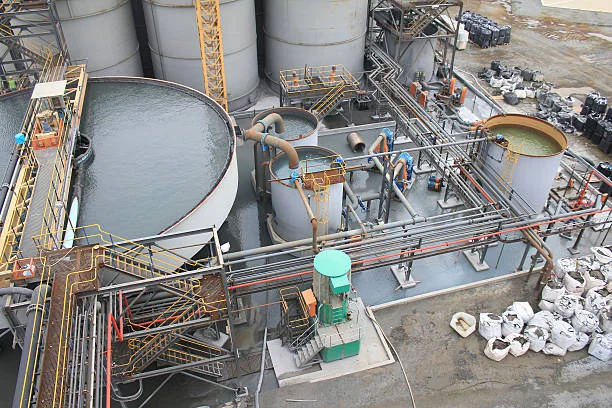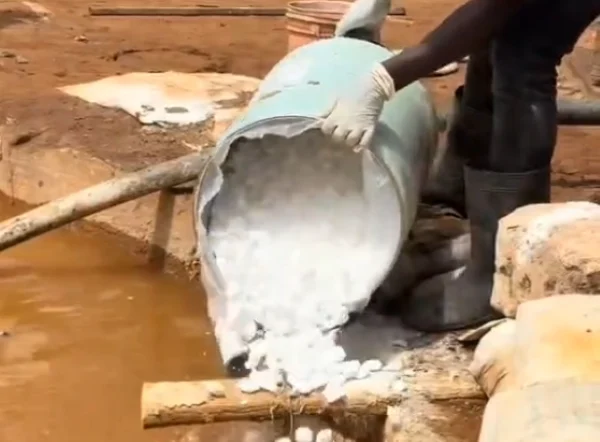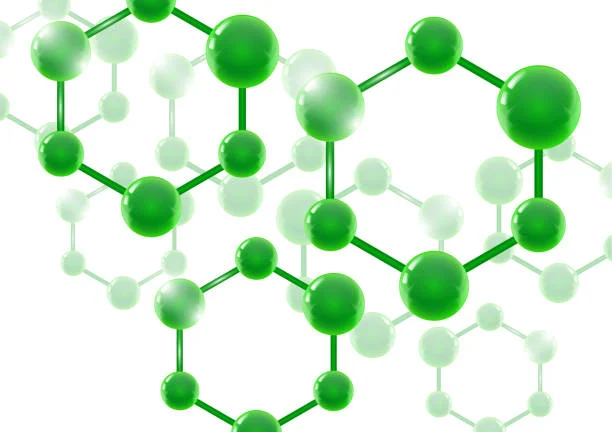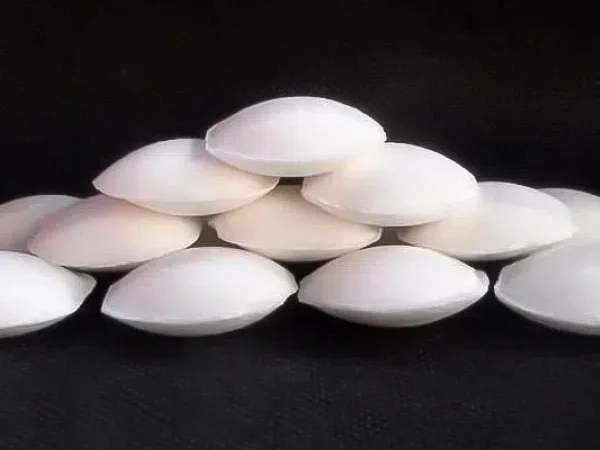
In the realm of mining, especially in gold extraction processes where cyanidation is a common method, understanding the relationship between Ore grade and Sodium Cyanide consumption is crucial. Sodium cyanide plays a pivotal role in dissolving gold from the ore matrix, but the amount required can vary significantly depending on the grade of the ore being processed.
Understanding Ore Grade
Ore grade refers to the concentration of the valuable mineral, such as gold, within the ore. High - grade ores contain a relatively large amount of the desired mineral, while low - grade ores have a much lower concentration. For example, a high - grade gold ore might contain several grams of gold per ton of ore, while a low - grade ore could have less than one gram per ton.
The Cyanidation Process
The Cyanidation process uses sodium cyanide solutions to react with gold in the ore. In the presence of oxygen, the cyanide ions in the Sodium cyanide solution combine with gold to form a soluble complex. This chemical reaction allows the gold to be separated from the ore matrix, making it easier to extract. The process is widely used because it is effective in extracting gold from various types of ores.
Impact of Ore Grade on Sodium Cyanide Consumption
High - Grade Ores
Lower Relative Consumption: When dealing with high - grade ores, the amount of sodium cyanide required per unit of valuable mineral (e.g., per gram of gold) is often lower. This is because there is a higher concentration of the target mineral in a smaller volume of ore. For instance, if a high - grade gold ore contains 10 grams of gold per ton, and it requires 2 kg of sodium cyanide per ton of ore to achieve an efficient extraction rate, the Sodium cyanide consumption per gram of gold is 0.2 kg. The relatively lower amount of gangue (the non - valuable minerals in the ore) in high - grade ores means that there are fewer side reactions that can consume cyanide.
Faster Reaction Kinetics: High - grade ores tend to react more quickly with the cyanide solution. The higher concentration of the target mineral provides more sites for the cyanide - gold reaction to occur. As a result, the extraction process can be completed in a shorter time, which may also contribute to lower overall cyanide consumption. This is because the longer the cyanide solution is in contact with the ore, the more likely it is to be consumed by side reactions such as hydrolysis or reactions with other impurities in the ore.
Low - Grade Ores
Higher Relative Consumption: Low - grade ores generally require a higher amount of sodium cyanide per unit of valuable mineral. Consider a low - grade gold ore that contains only 0.5 grams of gold per ton. To achieve a reasonable extraction rate, it might need 1.5 kg of sodium cyanide per ton of ore. In this case, the sodium cyanide consumption per gram of gold is 3 kg, which is significantly higher than in the high - grade ore example. The reason for this is that there is a larger volume of gangue minerals in low - grade ores. These gangue minerals can react with cyanide, either by forming complexes or by consuming oxygen in the solution, both of which increase the cyanide requirement.
Slower Reaction Rates: The extraction process for low - grade ores is often slower. The lower concentration of the target mineral means that the cyanide ions have to search through a larger volume of ore to find and react with the gold. This longer reaction time can lead to increased cyanide consumption due to side reactions. Additionally, in some cases, to compensate for the slow reaction rate, higher cyanide concentrations might be used in the solution, further increasing the overall consumption.
Other Factors Affecting the Relationship
Mineralogy of the Ore: The presence of other minerals in the ore can greatly influence the cyanide consumption regardless of the ore grade. Minerals such as copper, zinc, arsenic, and antimony can react with cyanide, forming stable complexes and thus consuming the cyanide that would otherwise be available for gold extraction. For example, copper minerals can react with cyanide to form copper - cyanide complexes, and if the ore contains a significant amount of copper, the cyanide consumption will increase substantially, even for high - grade gold ores.
Particle Size and Surface Area: The size of the ore particles and their surface area also play a role. Finely ground ores have a larger surface area, which can enhance the contact between the cyanide solution and the gold particles. However, if the ore is over - ground, it can also increase the amount of gangue minerals that are exposed and available to react with cyanide. This factor can impact the cyanide consumption differently for high - and low - grade ores, but in general, proper control of particle size is essential to optimize cyanide usage.
Conclusion
In summary, the grade of the ore has a significant impact on the amount of sodium cyanide required in the cyanidation process. High - grade ores typically require less sodium cyanide per unit of valuable mineral and have faster reaction kinetics, while low - grade ores demand higher amounts of cyanide and often have slower reaction rates. However, other factors such as the mineralogy of the ore and the particle size also need to be carefully considered when determining the optimal sodium cyanide dosage in mining operations. By understanding these relationships, miners can more efficiently and cost - effectively extract valuable minerals while minimizing the environmental impact associated with the use of sodium cyanide.
- Random Content
- Hot content
- Hot review content
- Sulphuric Acid 98% Industrial Grade
- Plastic Shock Tube(VOD≧1600m/s)
- Cyanoacetic acid 99% Powder
- Food Grade Ammonium Sulphate
- Manganese sulfate
- Gold Ore Dressing Agent Safe Gold Extracting Agent Replace Sodium Cyanide
- Lithium hydroxide 99% Solid
- 1Discounted Sodium Cyanide (CAS: 143-33-9) for Mining - High Quality & Competitive Pricing
- 2China's New Regulations on Sodium Cyanide Exports and Guidance for International Buyers
- 3Sodium Cyanide 98% CAS 143-33-9 gold dressing agent Essential for Mining and Chemical Industries
- 4International Cyanide(Sodium cyanide) Management Code - Gold Mine Acceptance Standards
- 5China factory Sulfuric Acid 98%
- 6Anhydrous Oxalic acid 99.6% Industrial Grade
- 7Oxalic acid for mining 99.6%
- 1Sodium Cyanide 98% CAS 143-33-9 gold dressing agent Essential for Mining and Chemical Industries
- 2High Quality 99% Purity of Cyanuric chloride ISO 9001:2005 REACH Verified Producer
- 3Zinc chloride ZnCl2 for High Molecular Weight Polymers Initiator
- 4High Purity · Stable Performance · Higher Recovery — sodium cyanide for modern gold leaching
- 5High Quality Sodium Ferrocyanide / Sodium Hexacyanoferr
- 6Gold Ore Dressing Agent Safe Gold Extracting Agent Replace Sodium Cyanide
- 7Sodium Cyanide 98%+ CAS 143-33-9











Online message consultation
Add comment: